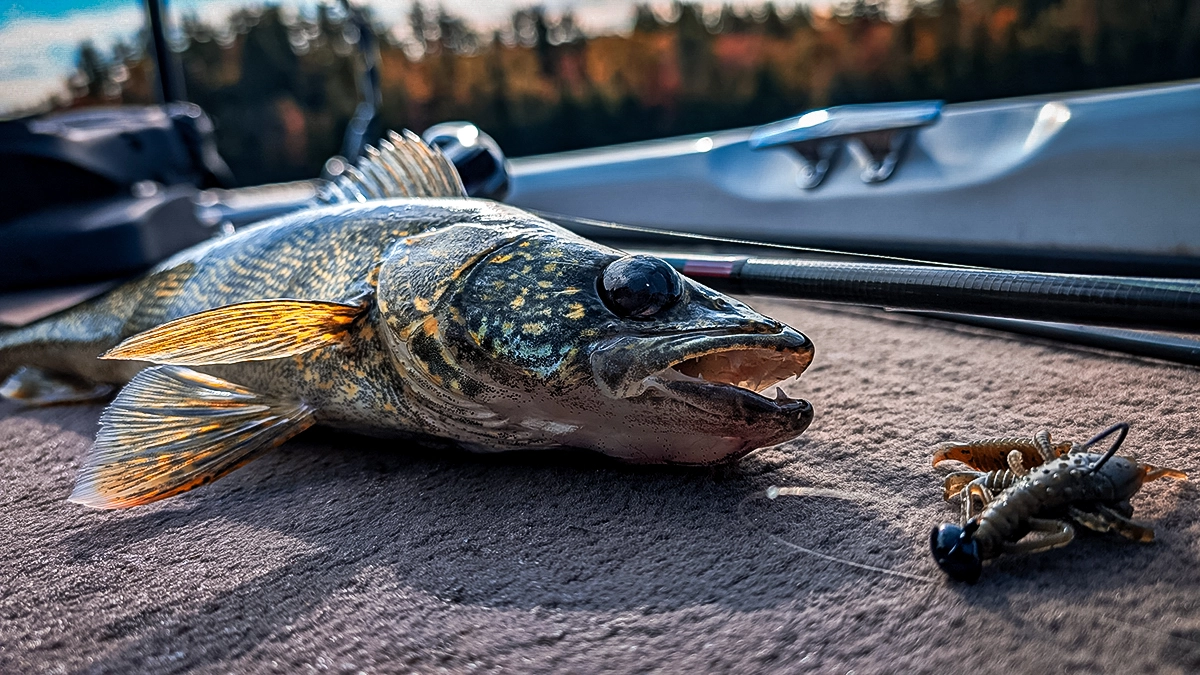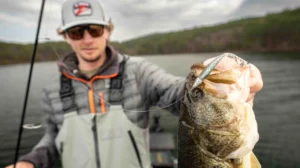If I had to describe myself as a walleye angler in one word, it would be “consistent.” I do not catch many big fish, nor am I up on the latest buzz in the walleye world. Most of my fishing trips for walleye produce a consistently average number of 18- to 22-inch eater-size walleye.
Social media loves big fish, while modest fish get scrolled by faster than Fourth of July fireworks posts. But in the offline reality, having fish in the frying pan is more important to many walleye anglers than the amount of likes a fish photo gets on Instagram.
Here are some unconventional walleye techniques I use to consistently get keepers that keep me and mine fed.
What Is It About the Fall?
When the leaves change and pumpkin spice lattes hit the coffee shops, I know it’s time to start thinking of walleye fishing. I am not a huge fan of finessing them into biting in the hotter months, and frankly, I have my eyes set for bluegill and bass during the summer.
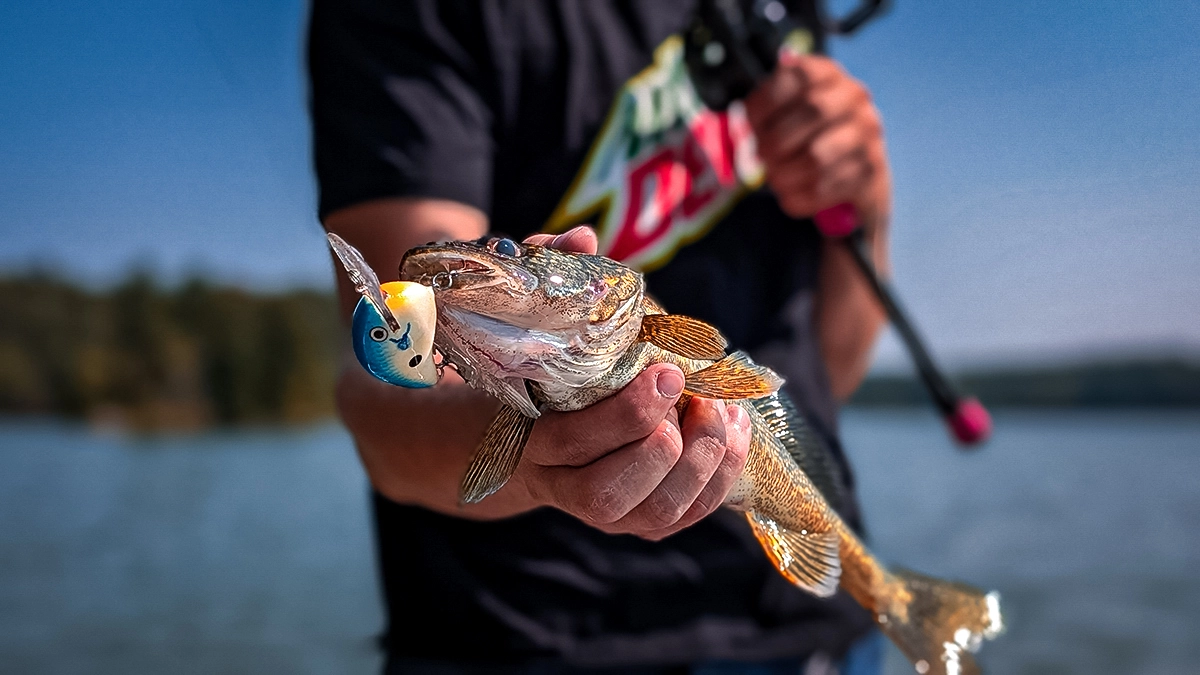
Every calorie counts for walleyed pike as they head into winter, and the fish will feast once the waters start to cool off around mid-September up until mid-November. Those tight lipped, picky eaters from the summer become voracious predators that will chase anything that fits into their mouths.
Baitfish also become concentrated as they search for the warmest water in the lake. This gets predator fish fired up and they can’t resist the urge for an easy meal.
Where To Find Fall Walleye
Target areas with a sharp transition from deep to shallow water. These areas allow baitfish to quickly find comfortable water, as their smaller bodies are more sensitive to water temp than the larger predators looking for them.
Look for Cover and Head to Exposed Shorelines
Rocks, weeds, and other cover that will absorb sunlight will concentrate baitfish. All walleye were baitfish at some point in their life and know this is where prime conditions are. The small shelves near the shoreline is a key area where schools of walleye will roam to ambush prey.
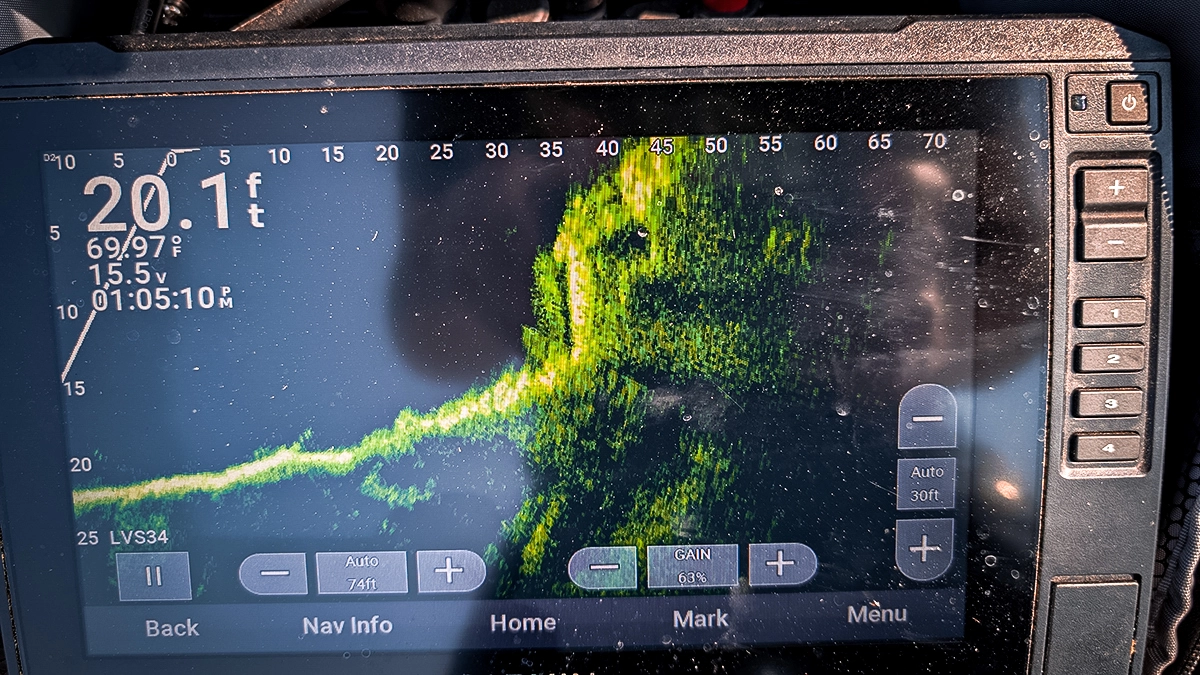
It may be cold, but heading downwind to target exposed shorelines is worth the hassle. I have saved myself from countless fishless days by taking a run downwind. Walleye will stack in as little as 3 feet of water to feast on prey too weak to fight the current.
Bait and Strategy
Jerkbaits excel here, but I like to confirm my suspicion of fish being there by quickly running a crankbait through to test the waters. Once you get bit a couple times on the crank, swapping to the jerkbait will allow you to work the school more deliberately. Don’t bother with the soft plastics setup if the fish are hitting hard. Again, this is a strategy to get numbers of keeper-sized fish, not to target stubborn fish.
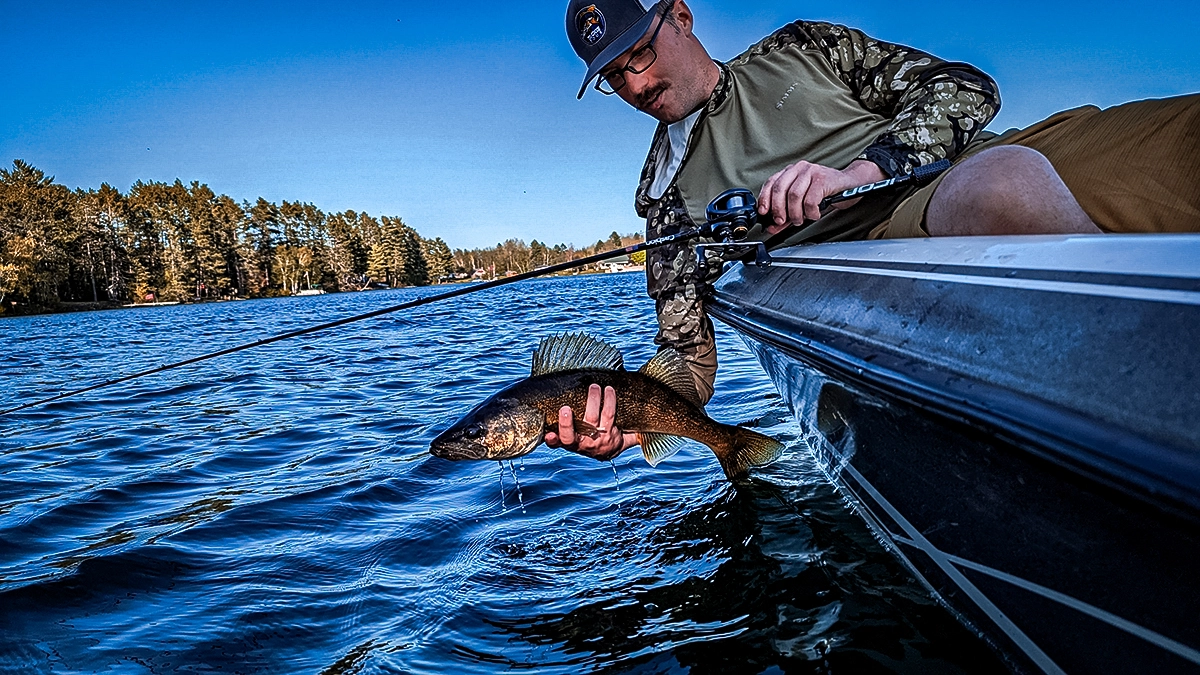
Clear water lakes tend to be more about fishing weed edges than structure this time of year. The fish clinging to structure are going to be deeper and take more time to catch. It’s still doable, but you want to be on the biting fish fast. After all, the days are only getting shorter this time of year, giving you less and less time on the water.
Pay Attention to Water Temperature
If you keep running into stubborn fish, water temps may not be low enough. If it’s overcast and windy, don’t be afraid to fish right next to the shoreline. I like to eliminate the shallow water bite first before shifting to deeper water that will take much longer to work.
Later in the fall, every fraction of a degree of water temp makes a huge difference. Look for the previously mentioned areas on the northern shores of the lakes. These shorelines receive more sunlight than the other shorelines and are protected from the bitter cold wind of late fall. I find later in the day is better for fishing due to the sun warming the shallow bays and other areas a little.
Fishing in the morning requires a little deeper and slower approach because the water temps will be at their lowest of the day.
Variables To Focus On
Most people say “early bird gets the worm” when it comes to fishing. In the fall, “second mouse gets the cheese” is more like it for me. I can sleep in, eat an actual breakfast and eventually get to the lake around 11a.m. This allows the water to warm up ever so slightly after a chilly night and really get the walleye feeding.
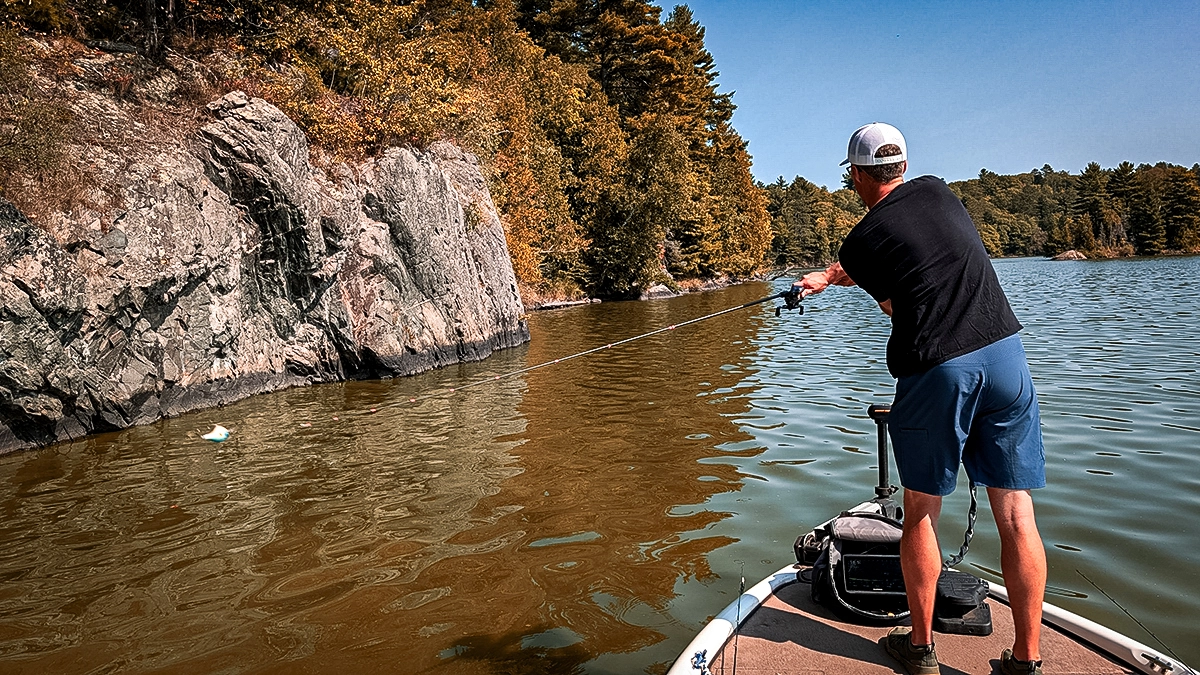
Variables such as water clarity, wind and water temps can be annoying to deal with. But the great thing is, once you figure out how to leverage these variables, you can hone in on where fish will be.
The fish know how to take advantage of these variables to put food in their bellies, so knowing what made us cross paths with those fish can lead to plenty of hookups as you are figuring out a pattern.
Water temps are most important in the beginning and at the end of the season. The in-between usually has a hot bite no matter what, so I focus more on covering water than deliberately picking through areas with a jig to convince them to bite.
The fall bite for me begins at around 64 degrees and tapers off in the high 40s. Walleye still bite outside that window, but that is the most active time for getting numbers without having to coax them into biting.
Around me, most of the walleye fishing is in tannic reservoirs. This means less light penetration and some sort of slow current flowing through the water. This paired with the typical fall wind can get a lot of water moving for walleye to setup along windblown points to feed along current like trout would. These fish also will setup just outside of the “surf zone” of rocky shorelines to pounce on baitfish too weak to escape the crashing waves.

There are a few lakes around me that have severe algae blooms and make for some interesting fishing. I dread and love it because I find that walleye like these areas, but my reels get covered in green snot-like goop.
Algae becomes concentrated with consistent wind direction over a few days, serving as an all-you-can-eat buffet for the lower food chain. Walleye will cruise the edges of these algae spans for feeding baitfish, looking for easy meals. The algae offers anglers a visual cue, alerting them to the presence of the bait and walleyes below. It also limits light penetration so catching walleye during bluebird skies is common in these areas.
Wherever you fish, pay attention to the small details about where you have success and failure and the conditions accompanying both. There may be one minor difference that is the deciding factor between catching fish or just making excuses as to why they wouldn’t bite.
You Found the Fall Walleye, Now Figure Out How to Catch Them
Suggested Rods:
- Abu Garcia Veritas Winch: 7ft Medium
- Daiwa Tatula: 7ft Medium Fast
Suggested Reels:
- KastKing MG12 7.4 ratio
- Daiwa Tatula SV TW 7.1
Admittedly, I do not have a single piece of “walleye” tackle. I mostly use bass tackle because the bass market is massive, leading to many more sales and lure options. Check the clearance section of places like Tackle Warehouse or Bass Pro Shops and you will see many affordable options that walleye will bite.
Lures are meant to imitate forage, so regardless of what the marketing says, it will catch walleye or anything else looking for that type of bait.. I have a simple system I use to target aggressive fall walleye, relying on only a few categories of lures:
Scouting System: Mid-Diving Crankbait

My “scouting” system is a mid-diving crankbait like the Rapala DT10 or Strike King Pro Model Series 5. I will make long casts close to rocky shorelines and work the crankbait fast, making sure I am hitting the bottom. This creates enough commotion to bring in active walleye and allows you to stay focused on those active fish instead of wasting time jigging at a solo fish you may have seen in 20 feet of water near the bottom.
I will stay on the trolling motor at a slow but steady pace to ensure I have a little overlap with my casts but, still making sure I am hitting new water at the same time — like using a lawnmower.
Keep on the move and you will find the active fish. Pay attention to all the variables previously mentioned and key in on areas that you find fish. Open a map on your marine electronics or on your smartphone to find similar areas to where you found fish elsewhere on the lake.
For burning crankbaits, I like running a 7ft medium powered, fast or moderate-fast action rod with a faster gear ratio reel. Using fluorocarbon line gives a little stretch to help with hookups and fast swiping walleye pinned.
Quick Hookups with Jerkbaits
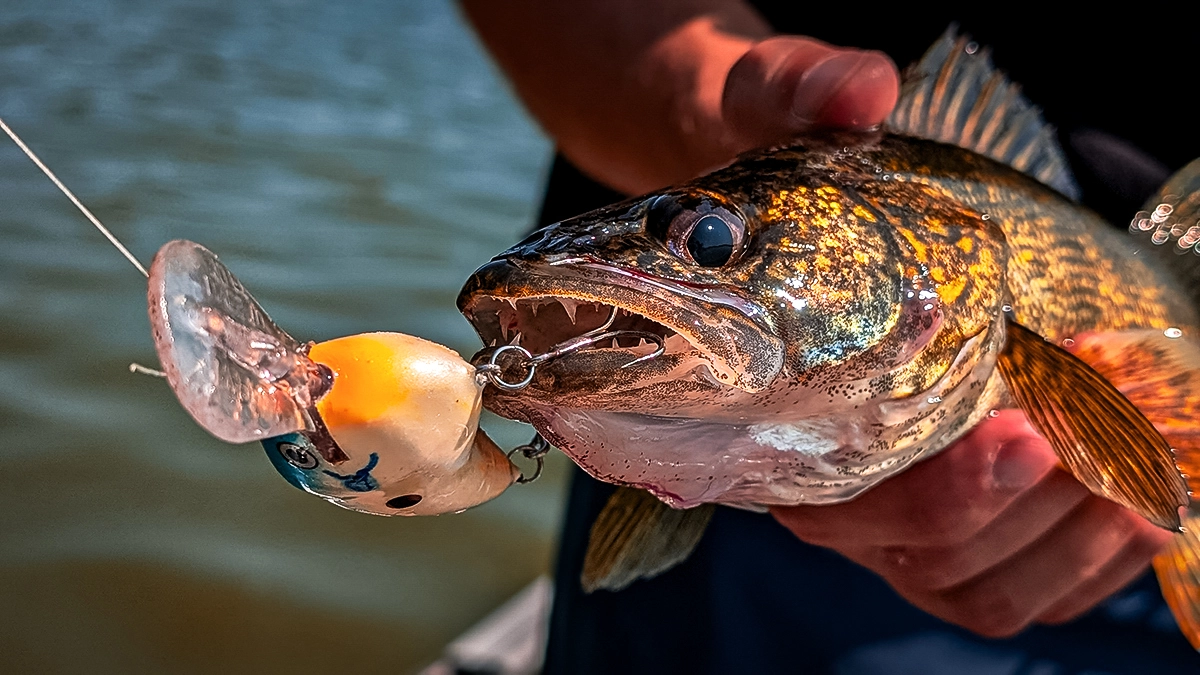
To draw fish in and get quicker hookups when you find fish, jerkbaits in the 4- to 8-foot range like a Rapala X-Rap 11 or Strike King KVD 200 Jerkbait in a loud color like Clown or Firetiger will be the ticket.
My regular go-to is suspending jerkbaits. I will work it on a hard couple twitches, then let it sit for a couple seconds. Most fish will hit on the pause, so watch your line; you will not feel the bite because the fish will mostly head toward deeper water the second they hit. Use a longer hookset to pick up slack line to make sure you have a good hookup.
These fish are rarely alone and that first bite will fire up the school, making it very possible to catch your limit in the matter of a few minutes.
Ned-Rig with Minnow-Shaped Lure
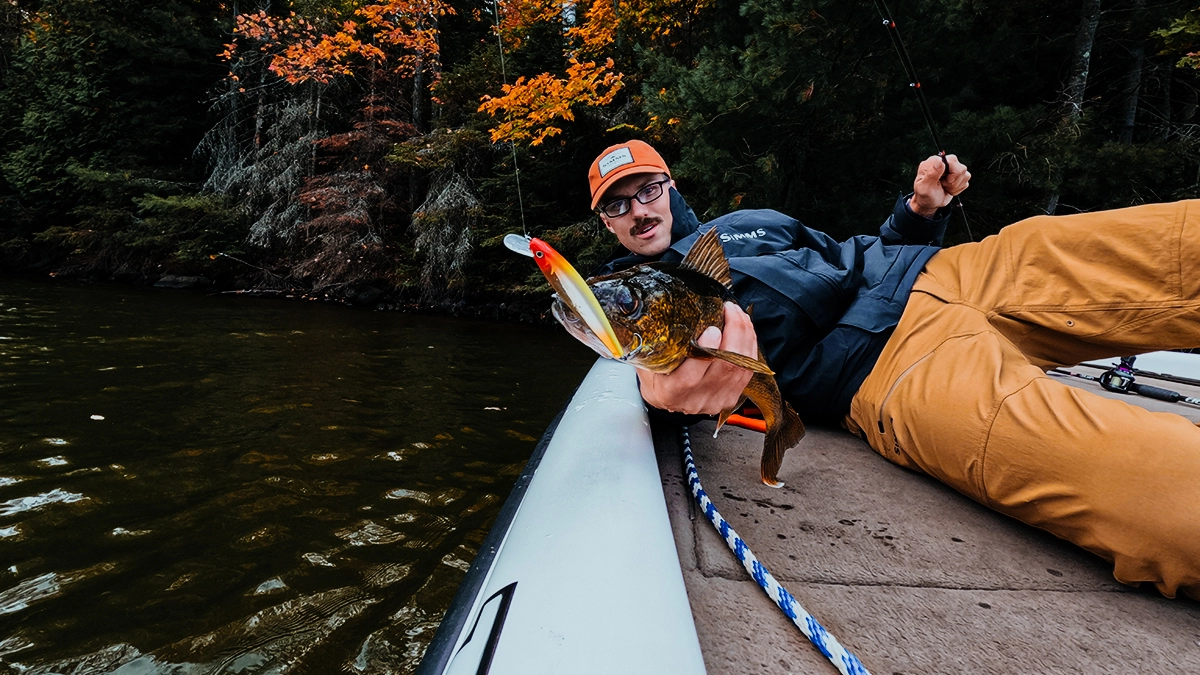
To round things off, I will have a Ned rig with something minnow-shaped like a Missile Bait Ned Bomb. This lets me pick apart likely spots with precision. Fish it just as you would for bass.
This 3-system approach allows me to make long casts with the crankbait to efficiently cover water to find the fish. If the fish in that school aren’t continuing to hit the crank, a jerkbait suspended may draw the weary fish into biting. Lastly, the Ned rig or soft plastic setup will coax fish you may see on your sonar near the bottom. And if all these don’t work, I turn to Plan B.
Plan B: The Fall Walleye Contingency Plan

You can easily replace the jerkbait with a soft swimbait such as the Keitech Fat Swing Impact or a Rapala The Mayor. The key is to let it sink slowly so the fish have a different presentation than a fast moving crankbait.
I tend to lean on natural colors for my swimbait because if the crank wasn’t working, the fish may not be fired up enough to be caught off guard: 1/8 ounce jigheads and a 3- to 5-inch soft plastic is my baseline. If I need to adjust for depth, I will up the weight of the jighead or switch to a more streamlined soft plastic to increase the fall rate of my lure.
For jerkbaits, you can use any of the rods/reels above. People may prefer a fiberglass rod over a carbon rod for crankbaits, but a jerkbait rod is usually carbon to be lighter and more responsive while twitching.
I think of the jerkbait as the most particular of the setups, although it is not my first weapon of choice. If you notice the bites are coming on fast twitching, the fish are feeding well. If you have to slow down and really convince them to bite, you may need to find warmer water or, they may be sitting closer to the bottom. When fishing from shore, a jerkbait is always my go-to lure.
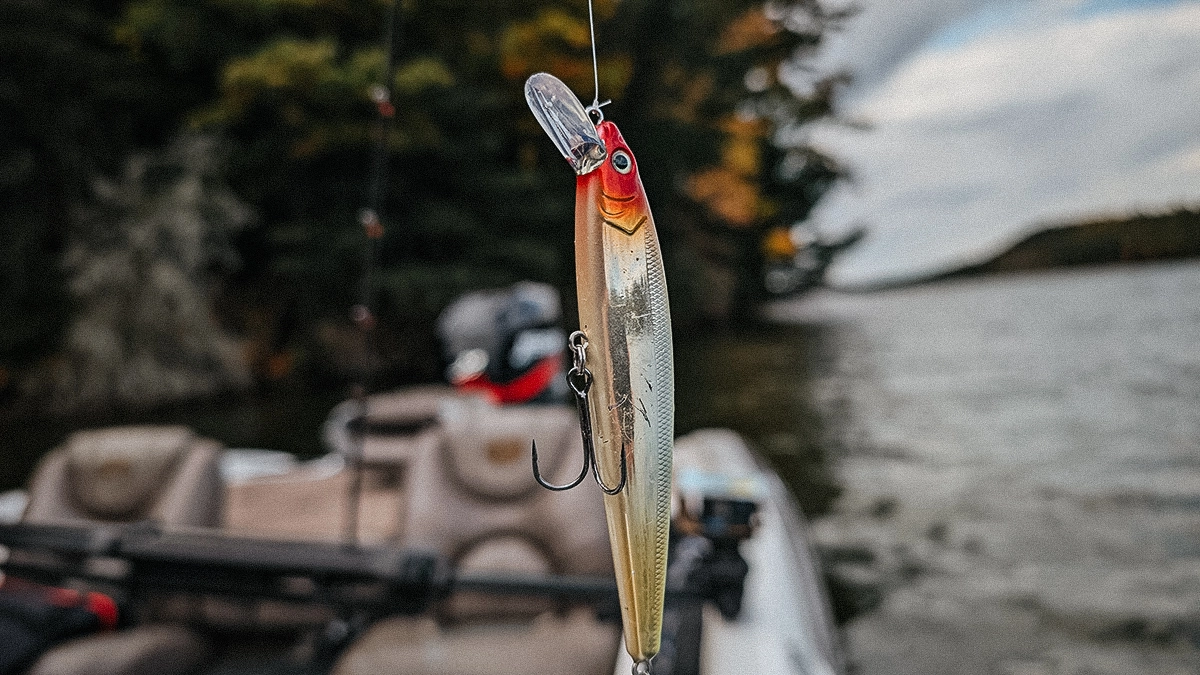
My soft plastics setup is usually a light to medium-light powered rod paired with a high-speed reel. Finesse baitcasting gear is my preference, but spinning tackle works just fine here too.
This year, I have been using the Cashion Icon BFS 7-foot Light for my rod choice. This rod is marketed as a moving bait rod, but with braided line, it has had a great hookup ratio and keeps fish pinned as they splash near the boat.

I use braided line with a long fluorocarbon leader to help detect subtle bites and to give me some control around weeds. A 4-carrier braid like VARIVAS 4 cuts through vegetation better than a smoother 8-carrier braid. There are many options of 4-carrier braid and is less expensive than the 8-carrier braid — it also works better around weeds. If you use a spinning reel, you may feel slightly better casting with smoother braided line.
Lures are usually 1/8 ounce Ned-style heads and a minnow profile soft plastic. This allows me to quickly get to the bottom without having a heavy rig. I can also “hop swim” it for more active fish, giving me a wide range of options to deliberately work an area for stubborn fish.
What About Trolling?
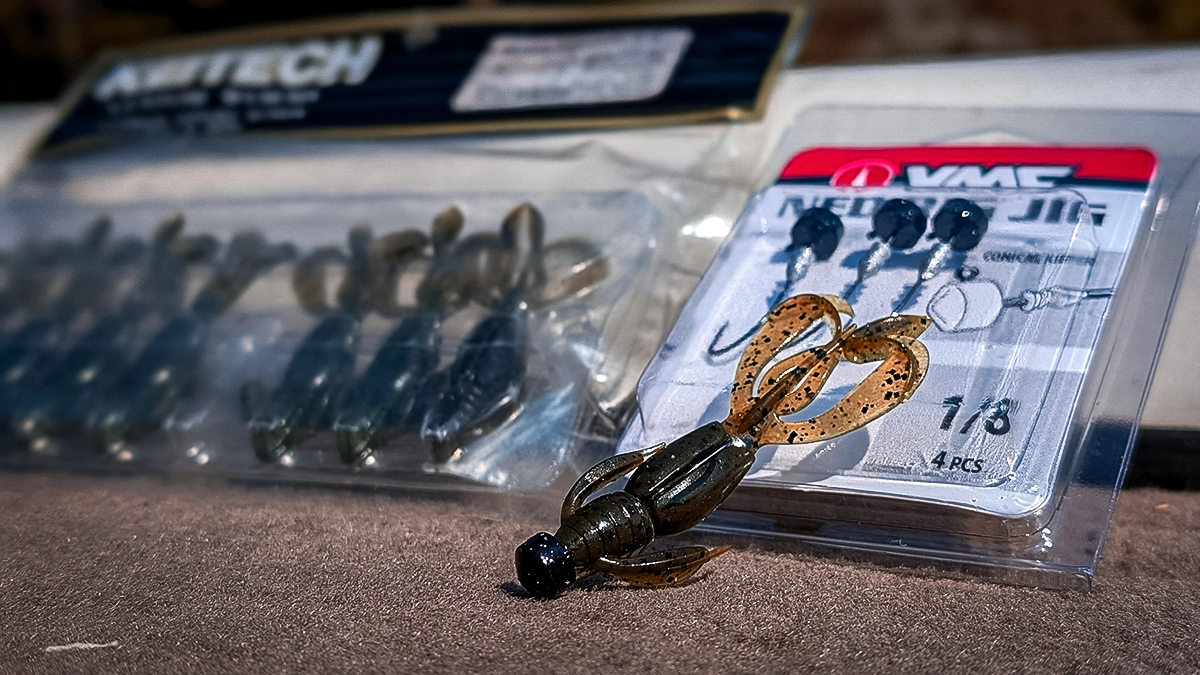
Finally, we get to trolling, which can be effective to get a few fish in the boat, especially if you are fishing a new lake and have a couple lines in the water as you are scanning around for structure.
You will inevitably come across active walleye, but the difficulty lies in getting back to the hot area quickly enough to work the school the fish came from before they move on. If you’ve ever trolled, you know the work it takes to reel in all of your planer boards just to turn around.
Chances are, you will have to kind of guess where you hooked up and have to still cast around quite a bit to find the school, if they’re still around.
That is the biggest reason why I tend to tell people to find key feeding areas for walleye and then work those areas with moving baits like a Rapala DT10 or other mid-diving crankbait instead of trolling them behind the boat. Once you find fish, repeated success is much easier with casting than it is making multiple passes trolling.
Try Something Different
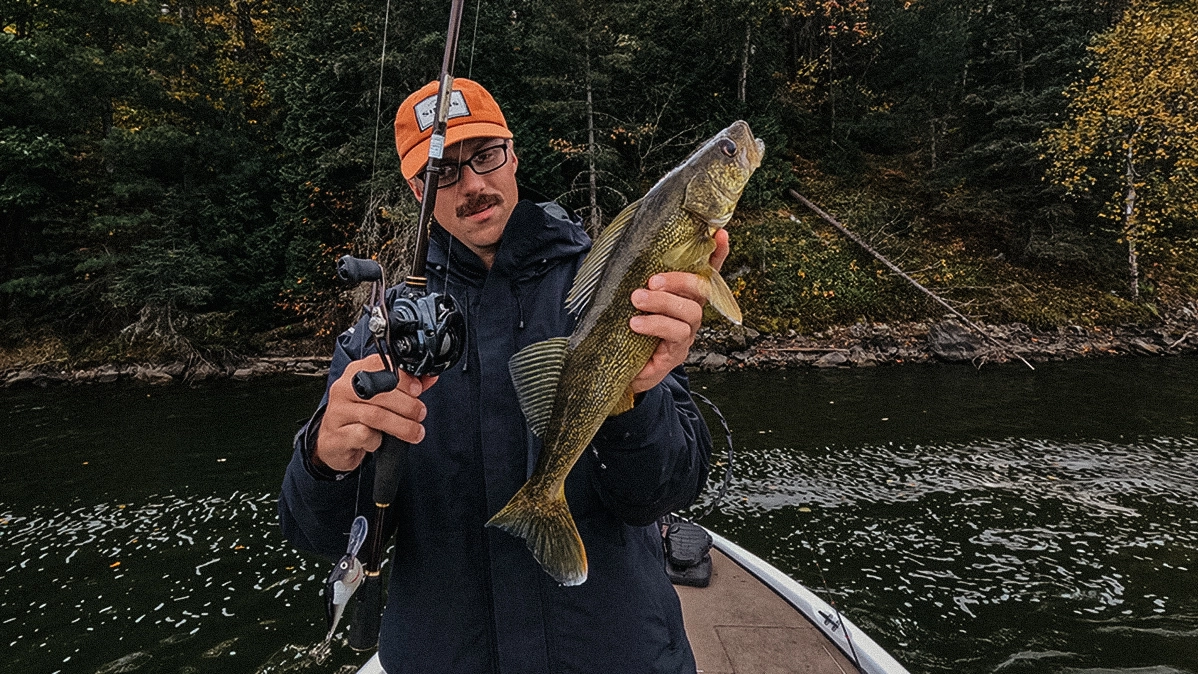
So there you have it — some atypical walleye tips that don’t require specialized tackle or equipment. Just grab some walleye lures and head out searching the shallows for aggressive fish. Taking a break from your usual walleye tactics and trying something different can be refreshing and might just put more fish in the boat.


